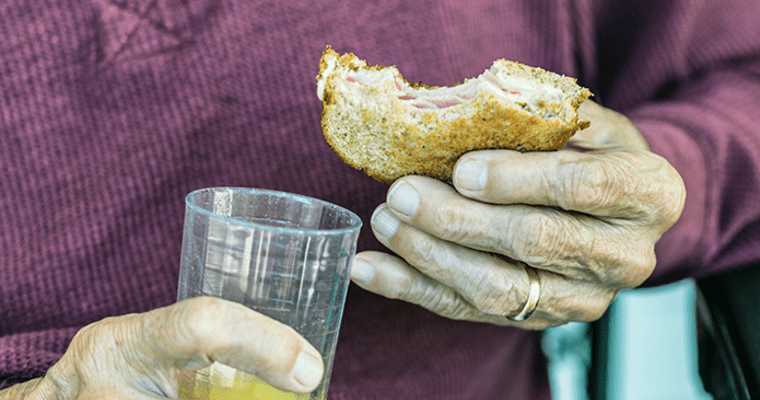Communication is the key to success in many areas. Healthcare mealtime is no exception. Illness, medications or simply aging can affect a person’s ability to connect to the surroundings and eat properly. That makes it essential for your staff to be trained in effective ways to interact with diners and promote self-feeding. Doing what’s best for them increases their independence and satisfaction, keeping their food intake at a safe level.
When a person has a hard time communicating, it creates frustration. At the table, frustration can affect the diner, the server and others nearby. “People need as much autonomy as possible, but they act out because of an unmet need,” reminds Lisa Misenhimer, RD, of Rethinking Dementia. That’s when it becomes the job of those on your staff to direct the communication. This takes patience, understanding and good listening skills.
Developing communication techniques
Even though a diner can’t communicate with you, it’s critical to interact at a personal level. Don’t speak about the person as if he’s not in the room. Approach people from the front if they’re standing, or sit next to them at the table to establish eye contact and avoid a threatening appearance. Then speak in a calm, relaxed voice:
- Address the people you are helping by name.
- Speak slowly, wait 60 seconds for a response.
- Keep sentences/instructions short.
- End each sentence with the most important word.
- Give simple choices, possibly one instruction at a time.
- Use verbal prompts to remind people to eat.
- Use visual or physical cues (demonstrating a fork-to-mouth motion).
- Offer praise often.
“Never use baby talk—the people you are feeding are adults,” says Ralph Richards, a researcher who works with the Alzheimer’s Association Greater Indiana Chapter. “They can tell a lot by the tone of your voice, and they may not be the only ones watching or listening.”
Feeding techniques that can help
Your staff needs to understand clearly how to work with each individual diner, customizing a feeding plan based on the eating abilities of each patient or resident. Monitoring such things as seating or positioning, the amount or rate of food intake and swallowing. If a diner uses or needs dentures, eyeglasses or hearing aids, your staff should be aware of how it affects mealtime.
When it comes to feeding, the book Evidence-Based Geriatric Nursing Protocols for Best Practice recommends three specific feeding techniques. Choosing the way that works best depends on being properly trained and aware of a diner’s needs:
- Direct hand feeding. The caregiver holds the fork or spoon and moves the food from plate to mouth. The person being fed is passive.
- Hand-over-hand feeding. The caregiver places a hand over the hand of the diner and guides food toward the mouth. The person being fed is active, but may perceive that he/she is being fed because of the hand position.
- Hand-under-hand feeding. The caregiver holds the fork or spoon and places that hand under the diner’s hand. From this perspective, the diner gets the sense of self-feeding and the benefits and enjoyment of independence that follow.
Recognizing when help is needed
Over time, it may not be possible or safe for your staff alone to work with patients or residents. Knowing when to call on other professionals—dietitians, speech language specialists, occupational therapists, nurses, etc.—is the best way to make sure you’re doing what’s best for a diner’s nutritional and health needs. Make sure your staff is trained on when and how to alert licensed professionals at times when mealtime safety is a concern. Watch for these signs and always report them to a supervisor:
- Improper positioning while eating (i.e., head titled back).
- Not chewing or swallowing food.
- Eating too fast or too slow.
- Not eating enough.
- Eating non-edible items.
- Combative behavior.
- Inability to sit and focus during mealtime.
- Forgetting if he/she has eaten.




























